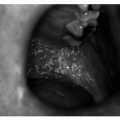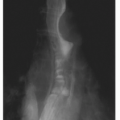Incidence and Prevalence
In the preceding decade, five community surveys showed that 5% of older adults report experiencing instances of domestic elder abuse, neglect, and financial exploitation. The lack of consistency in terminology used among the 50 states and variation in reporting standards contribute to inadequate incidence and prevalence data. To obtain more valid incidence data, the Congress mandated a national study in 1996. A “sentinel” approach was employed, similar to previous federally sponsored child abuse surveys. This methodology assumes that reported cases present only the proverbial “tip of the iceberg” and that many more cases in the community are never reported. Through a random sampling process, 20 counties were selected to serve as the sample sites. In each county, information on the cases was obtained from the local Adult Protective Services agency and a specifically trained group of individuals, or the sentinels, who were drawn from agencies that normally serve older people, such as hospitals, clinics, law enforcement agencies, senior citizens programs, and banking institutions. The results of the National Elder Abuse Incidence Study
3 estimated that nearly a half a million persons aged
60 and older living in domestic settings were abused, neglected, or exploited in the United States in 1996. Of this total, only 70,942 cases were reported and substantiated by Adult Protective Services. The remainder were not reported but were identified by the “sentinels.” In other words, for every case reported to the Adult Protective Services, it is assumed that there were five cases that were not reported. Further projecting the estimates—recognizing those that were never reported nor recognized—it was estimated that there were between 820,000 and 1.86 million abused older people in the country.
As a point of comparison, the 1996 US Cancer Statistics for older adults reveals 133,000 cases of colon cancer per year, 66,000 cases of cervical cancer per year, and 185,000 cases of breast cancer per year. The incidence of elder abuse and neglect cases increased by 128% between 1986 and 1996. The National Center for the Prevention of Elder Abuse estimates a 60% increase since 1996.
4 The most frequently cited prevalence figure is 32 seniors per 1,000.
Mortality Rates
Elder abuse results in increased mortality rates.
1 Dr. Mark Lachs evaluated data from the New England Established Population for Epidemiological Studies of the Elderly, which followed an annual health survey of 2,812 community-dwelling adults aged 65 or older. He compared these data against reports of elder abuse and neglect made to the local Adult Protective Service over a 9-year period. The survival rates of the nonabused and abused were tracked. By the 13th year following the initiation of the study, 40% of the nonabused group was still alive, compared to 17% of those seen for self-neglect. Only 9% of those seen for elder mistreatment were still living. No other significant factors predictive of mortality were found, including age, gender, income, functional status, cognitive status, diagnosis, and social support.
Elder Abuse as a Geriatric Syndrome
Over the last two decades, studies have documented physicians’ failure to diagnose a variety of common conditions in elderly people in the course of “usual and customary care.” Examples include dementia, depression, and general functional decline. Geriatricians have conceptualized these entities as “geriatric syndromes,” or common clinical problems that rarely have a single, underlying, pathophysiologic process, which is typically sought in the pure medical model. More often, there are several contributing factors that shape the clinical presentation. Typically, environmental factors play a prominent role. Interventions are multiple and directed at specific pathology, as well as contributing environmental factors. Elder abuse has many of the characteristics of a geriatric syndrome.
Framing elder abuse as a geriatric syndrome provides a conceptual starting point from which the physician and health care professional can begin to address mistreatment, from screening to management. Definitive diagnosis and management requires a comprehensive evaluation of all potentially contributing factors. The relative contribution of comorbid medical conditions, environmental factors, and social influences must be determined before rational interventions are developed.
From the perspective of physicians, Dr. Mark Lachs identified three major causes generic to the problem of family violence: Clinical and academic discomfort, time and reimbursement constraints, and perceived impotence.
5 Many physicians feel uncomfortable inquiring about domestic violence and may feel clinically incompetent because they lack formal training. Family violence does not fit neatly within the traditional medical paradigm of symptoms, diagnosis, and treatment. Personal identification with patients may preclude the proper evaluation of family violence.
From an academic perspective, additional research focused on elder abuse and neglect is urgently needed. Time and reimbursement constraints hinder evaluation of elder abuse, which is a time-consuming process. A complete assessment may not be practical, particularly if discovery occurs in the midst of a routine evaluation. Scheduling a longer follow-up visit or referral is essential. Awareness of available community resources provides professionals with an important timesaving advantage.
Unfortunately, many physicians perceive that they are unable to make a difference. Some express the belief that it was the duty of the victims to separate from an abusive environment and that they doubted that counseling would achieve a positive outcome. Some physicians express unsatisfactory outcomes with previous patients, which created skepticism that they could serve any useful role. This attitude views the problem as a social issue and, therefore, places it outside their professional boundaries. Signs and symptoms of elder abuse may be dismissed as inevitable aspects of aging or ascribed to comorbid diseases (see
Table 9.1).
Fractures can be attributed to osteoporosis. Direct reports of abuse may be dismissed as manifestations of dementia, delirium, delusion, or confusion, or even side
effects of polypharmacy. Depression and pain may be underreported by the patient and therefore unrecognized and untreated by the physician. Because chronic pain can lead to depression, social isolation, and neglect, early identification is critical.
Failure to thrive is often blamed on general frailty, when in fact it can be the result of the deliberate withholding of food or medicines by a care provider. Unless clinicians consider elder abuse in the differential diagnosis of these presentations, these “false-negatives” will continue.







